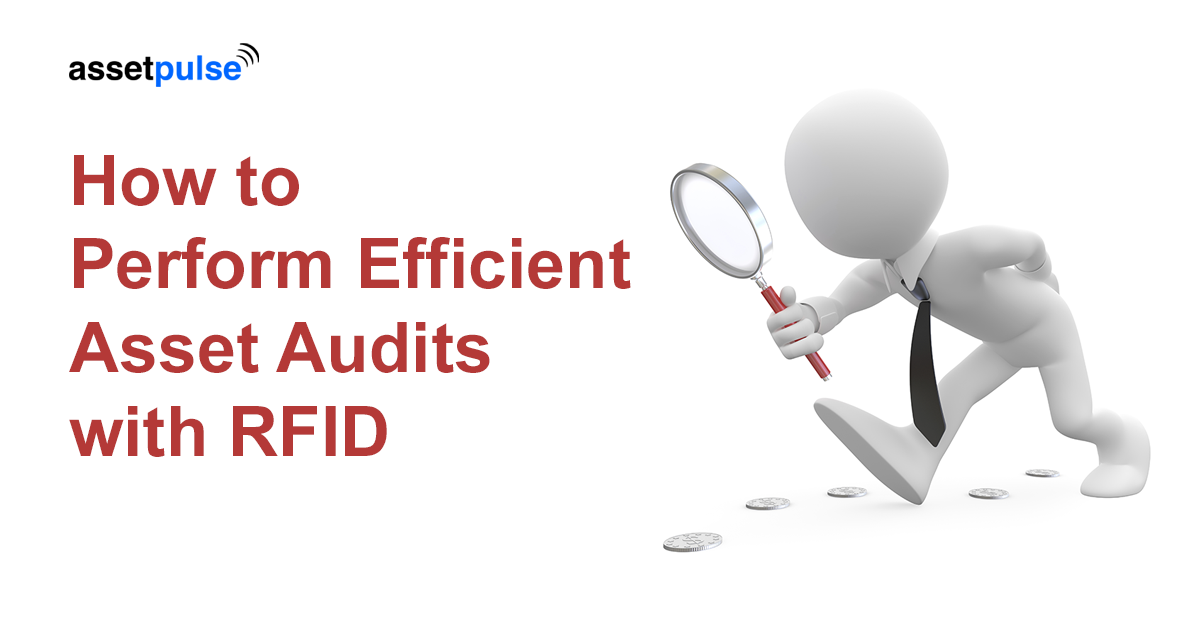Table of Contents
RFID is the Asset Manager’s great ally when it comes to annual asset audits…..
Wall to Wall Asset Audit Process
Do you find yourself preoccupied with your annual asset audit for at least three months every year? Annual or Semi-annual audits are the bane of the Asset Manager’s existence. No matter the type of assets to be audited – IT assets across the Enterprise, instruments in Labs, tools on the manufacturing floor or weapons in the Armory – the process is excruciatingly tedious and burdensome. If you currently use barcodes or worse, a highly labor-intensive manual process to do your wall-to-wall audits, we commiserate with you.
Having to crawl under desks or lab benches, reach behind assets in order to read off barcodes or serial numbers, is not only time consuming, but can also be injurious to your health! Often, teams of people are made to perform these audit tasks and it can take days, if not weeks. Once an audit is done of the entire company, considerable amount of time is spent reconciling the audited list with the list sent by your finance department.
Then the teams have the unenviable task of chasing down those assets that were not yet located the first time around. Now, equipment owners, lab managers, Principal Investigators and the like, are recruited to participate in the daunting task of having to track down the missing assets. After days of these expensive resources being deployed, the missing asset list is whittled down to a few dozen. The Finance department is then asked to write these items off. All in all, it is a costly and laborious process.

Image: https://www.flickr.com/photos/berkeleylab/3523139681/
RFID Asset Tracking Solution for Wall to Wall Asset Audit
1) Identify all assets that you need to audit and RFID tag them
By using RFID asset tracking solutions i.e. RFID tagging the assets, using an RFID handheld reader only or a combination of RFID handheld readers and fixed RFID readers, the organization can more efficiently and accurately complete its audits, with nearly 100% reconciliation. Audit times can be cut down by nearly 90%, i.e. if a manual audit of a building takes 20 hours, an RFID scanned audit will take less than 2 hours to complete.
2) Perform Asset Audit with RFID scanner
How often has an audit team found an asset stashed away in a cardboard box in the far corner of a room after having spent dozens of hours looking for it. If the asset had an RFID tag on it, it would have been picked up the first time someone walked by it with an RFID scanner. This is because RFID tags can be read from inside cardboard and wooden boxes.
3) Scan Multiple Assets with RFID as opposed to 1 by 1 scanning of Barcode
Scanning barcode tagged assets with a barcode scanner takes at a minimum 30 seconds per asset. This typically involves locating the barcode and then aligning the scanner in line with barcode to scan it. Whereas, scanning 100 assets that are RFID enabled takes less than 10 seconds. This enables the customer to be able to perform inventory scans more often and so asset information usually is up-to-date. Additionally, the AssetGather web application keeps track of each and every asset’s movement history. If during the audit process, a critical asset is not found, then the AssetGather web application can be used to identify where the RFID tagged asset in question was last seen. This helps save tremendous amount of time for the Inventory Manager who tries to locate an asset in a traditional barcode system.
4) 90% Faster Asset Audits and Efficient Locating of assets with RFID
Our customers have not only seen at least a 90% reduction in audit times, but have also not seen a need to write off inventory due to their inability to locate them. Further, they have realized more than 100% ROI in less than 2 years.
One of our happy customers
“The AssetPulse active RFID solution meets my needs for managing the ALS vacuum equipment pool. The inventory and search capability of the active system is invaluable during the yearly wall to wall inventory of the entire lab. Having an up-to-date inventory record of all assets will cut the time and labor cost to the lab to an ultimate minimum. Previously, wall-to-wall inventory has taken multiple weeks to manually find and scan these assets.”
– Frank Zucca, Lawrence Berkeley National Laboratory
Since the AssetPulse web application server keeps track of asset movement history, additional data can be gleaned out of the system like what types of assets are used extensively and how long an RFID enabled asset stays at a particular location. This will help the inventory management team to stock more of these assets so that these assets do not become a bottle neck for regular day to day work.


